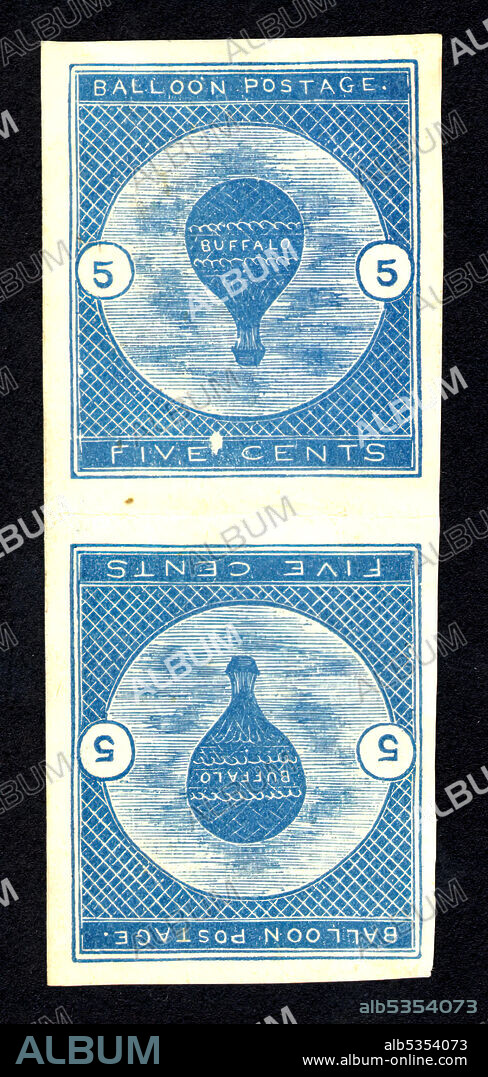alb5354073
5c Buffalo Balloon imperforate vertical pair,1877. Creator: Unknown.

|
Ajouter à une autre Lightbox |
|
Ajouter à une autre Lightbox |



Avez-vous déjà un compte? S'identifier
Vous n'avez pas de compte ? S'inscrire
Acheter cette image

Titre:
5c Buffalo Balloon imperforate vertical pair,1877. Creator: Unknown.
Légende:
Voir la traduction automatique
5c Buffalo Balloon imperforate vertical pair, 1877. Perhaps the most enigmatic of all American stamps, the Buffalo balloon stamp is certainly among the premier rarities in aerophilately. Since it was privately issued for use with a standard U.S. postal service 3-cent stamp to pay for air handling of a mailed piece, it was (if one includes both private and government issues) the world’s first airmail stamp. The stamp is an accurate representation of the enormous 92,000 cubic foot “Buffalo” balloon of Professor Samuel Archer King (1828-1914), and was designed by John B. Lillard, a clerk in the Wheeler firm and a passenger on the great flight. Interestingly, the engraver of the stamp was John H. Snively, a scientist who provided apparatus for experiments on the flight. The stamps were printed tete-beche format—that is, they are shown right side up and upside down below on one sheet. It is likely that in printing the stamp, one side was printed, and then the sheet was taken out and turned round and fed back in the press to produce a mirror image of the first row.
Personnalités:
Crédit:
Album / Heritage Art/Heritage Images
Autorisations:
Modèle: Non - Propriété: Non
Questions sur les droits?
Questions sur les droits?
Taille de l'image:
2364 x 4960 px | 33.5 MB
Taille d'impression:
20.0 x 42.0 cm | 7.9 x 16.5 in (300 dpi)
Mots clés:
AÉROSTATION • AEROSTATIQUE • AMÉRICAIN • AVIATION: MONGOLFIERE • BALLON (AEROSTAT) • BALLON CAPTIF • BALLON • BUFFLE • BUFFLES • BUREAU DE POSTE • CIEL MONTGOLFIERE • COLLECTION DE TIMBRES • COMMUNICATION • CORRESPONDANCE • COULEUR • MONGOLFIERES • MONTÉE • MONTGOLFIERES • PHILATELIE • POSTE AERIENNE • RARE • ROI • SMITHSONIAN INSTITUTION • TRANSPORT MONGOLFIERE • XIXE SIÈCLE
 Pinterest
Pinterest Twitter
Twitter Facebook
Facebook Copier le lien
Copier le lien Email
Email
